Chapter 1 – Television Studio Environment
Prompted and Edited by John Acosta and Generated by ChatGPT 4 and Bing Image Creator unless otherwise noted.
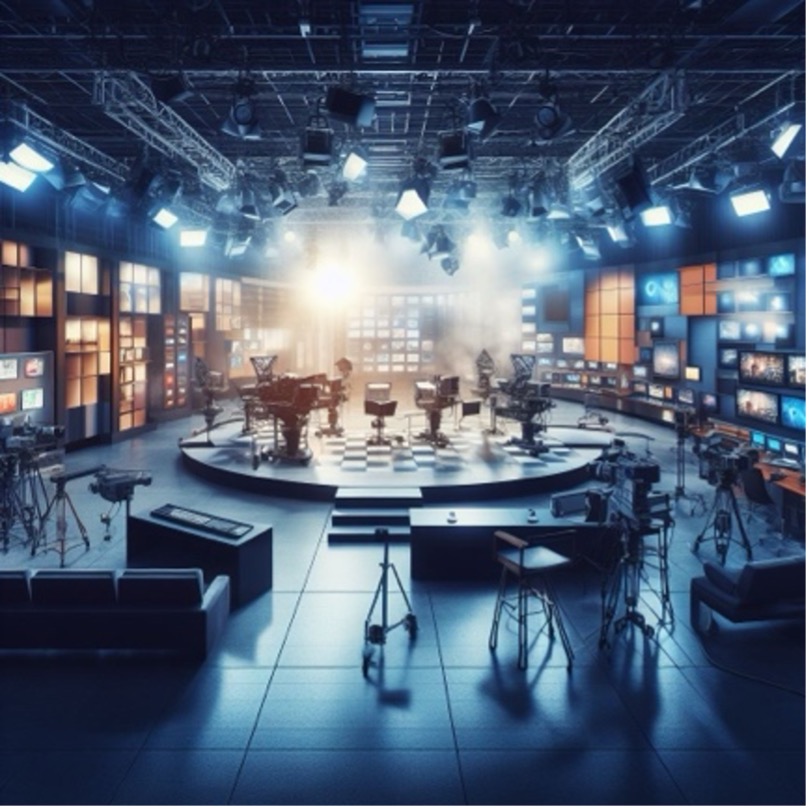
Figure 1 Television Production Studio by Bing Image Creator
Learning Objectives
1. Understand the Architecture: Students will identify the two primary areas in a television studio: the Control Room and the Studio Floor.
2. Control Room Components: Gain a comprehensive understanding of the Switcher for 3 Cameras, Audio Control, Graphics, Teleprompter, Lighting Board, and Digital Playback (and Record) Unit.
3. Studio Floor Components: Students will understand the layout and functionality of 3 cameras with controls and teleprompters, lighting grid with traditional and common lighting instruments, and the basic set including a newscast table and chairs.
4. Operational Awareness: Acquire a foundational understanding of how the Control Room and Studio Floor interact during a production.
5. Vocabulary Development: Students will become familiar with the key terminologies associated with a Television Studio environment.
Section 1: The Control Room and Studio Floor
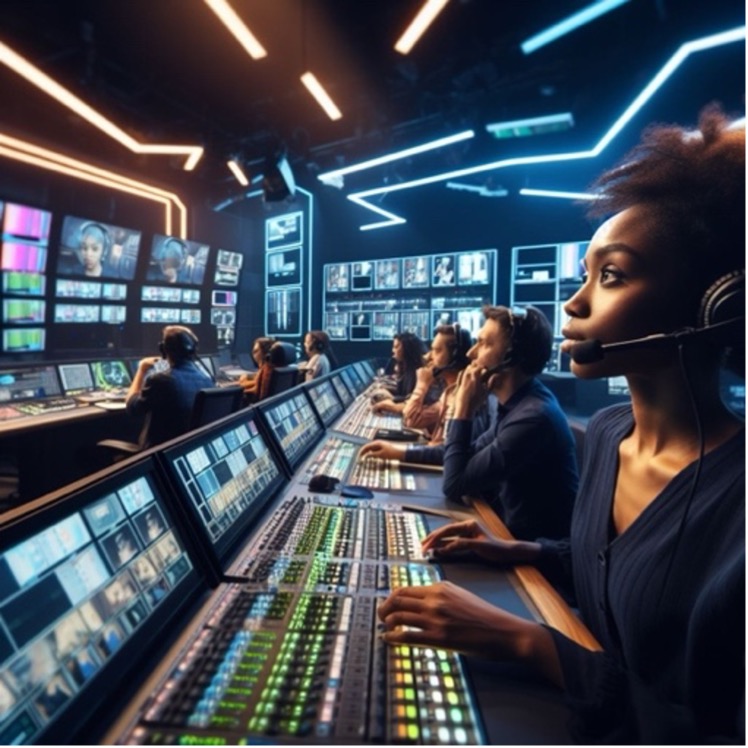
Figure 2 Control Room for Television Studio by Bing Image Creator
The Complexities of the Production Control Room: Key Roles and Responsibilities
The television studio operates as a dynamic integration of cutting-edge technology and human ingenuity, a complexity most visibly orchestrated in the Control Room or Production Control Room (PCR). Serving as the cerebral nexus of a television studio, the Control Room is where myriad technical elements come to life, each choreographed to contribute to the creation and dissemination of content.
Wikipedia succinctly describes the Production Control Room as “a specific type of control room found in television studios, serving as a central space where a producer, director, and production staff can coordinate and control the assembly of the final broadcast.” Intriguingly, the term “gallery” is also sometimes used for the Control Room, a nomenclature with historical roots traced back to the BBC’s original studio at Alexandra Palace. Here, the director was ensconced on a grandly designed bridge reminiscent of a minstrels’ gallery. While the PCR houses the majority of controls, it is important to note that these are often interfaces for equipment located in a different room, specifically the Central Apparatus Room (CAR), where the actual hardware is rack-mounted (Wikipedia, n.d.).
Roles and Responsibilities within the Production Control Room:
1. Producer: The overseer of the project, the producer liaises with both technical and creative teams to ensure the final product aligns with the project’s vision, budget, and schedule.
2. Director: This individual possesses the creative agency to make real-time decisions that shape the program. From calling shots to issuing directives to camera operators, the director’s influence is pervasive.
3. Technical Director: Functioning as the technical anchor, this role involves managing the video switcher, cueing graphics, and coordinating with the director to make sure the show flows seamlessly.
4. Vision Mixer: Often working closely with the Technical Director, the Vision Mixer is responsible for live transitions and effects, working the vision mixing desk to switch between different camera feeds.
5. Audio Engineer: From microphone checks to audio mixing, this role is pivotal for sound quality control.
6. Graphics Operator: Tasked with real-time management of on-screen graphics, from lower thirds to full-screen images and tickers.
7. Prompt Operator: This person controls the teleprompter, ensuring that the script is displayed at an appropriate speed for on-air talent.
8. Playback Operator: Manages pre-recorded segments that are integrated into the live broadcast, ensuring that they play back smoothly and at the correct times.
9. Communications Coordinator: Often responsible for the ‘talkback’ system, this role facilitates communication between the Control Room and the Studio Floor, as well as between different sections of the Control Room itself.
10. Script Supervisor: Keeps track of which parts of the script have been completed, advising the director and other key personnel on timing and upcoming segments.
The collaborative synergy between these various roles within the Production Control Room is imperative for the smooth functioning and high-quality output of any television production. A harmonious melding of technical expertise and creative vision, the Control Room is a microcosm of the larger world of television studio production, encapsulating its complexities, challenges, and triumphs.
Reference:
Wikipedia. (n.d.). Production control room. Retrieved from [Production Control Room – Wikipedia](https://en.wikipedia.org/wiki/Television_studio)
Understanding the nuanced intricacies of these roles, along with their collaborative interaction, will empower you with a more profound comprehension of television production. This knowledge is not merely academic but serves as a practical guide for those aspiring to participate in this multifaceted and dynamic field.
The Studio Floor
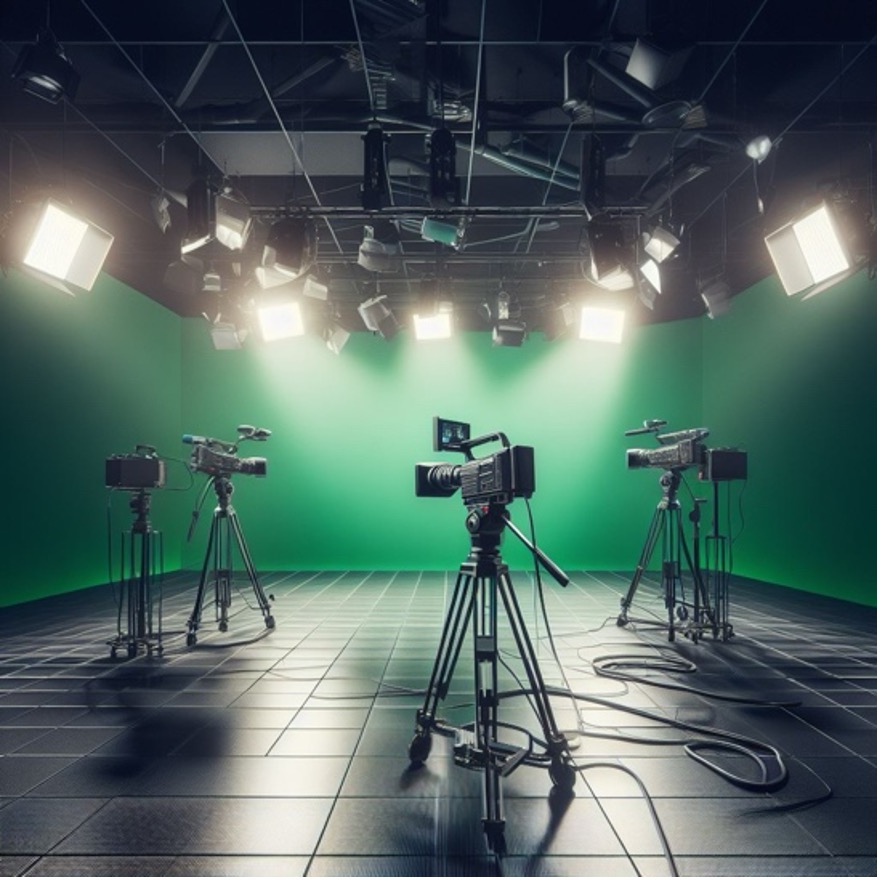
Figure 3 Floor with Cameras for Television Studio by Bing Image Creator
The Dynamics of the Studio Floor: Key Roles and Responsibilities
In the anatomical metaphor of a television studio, if the Control Room serves as the brain, then the Studio Floor is indisputably the body. It is the physical space where the theories and plans of pre-production materialize into visible, recordable action. Just as a living organism depends on the orchestrated function of its body parts, the Studio Floor integrates various elements—sets, cameras, lighting, and human talent—to create a holistic media experience.
Wikipedia explains that the studio floor is “the actual platform where the activities intended for recording and public viewing are executed.” This space typically includes a plethora of installations and elements that range from decorative sets to specialized audio-visual equipment. For instance, professional video cameras are usually numerous and strategically mounted on pedestals for optimal angles. Audio tools, like microphones and foldback speakers, punctuate the setting, as do stage illumination systems, usually controlled by a Lighting Control Console often located in the Production Control Room (PCR). The setting often includes video monitors offering visual feedback from the PCR, a rudimentary public address system for internal communication, and sometimes even a glass partition separating the studio floor from the PCR—although this last feature is not universally present (Wikipedia, n.d.).
Roles and Responsibilities on the Studio Floor:
1. On-screen Hosts and Guests: They are the visible focus of the television program, responsible for conveying the message, emotion, or story to the audience.
2. Floor Manager: This individual is tasked with managing the stage on the studio floor, acting as a conduit for directives and timing cues from the television director located in the PCR.
3. Camera Operators: Positioned on the studio floor, these technicians handle the cameras, capturing the program from various angles. Sometimes, cameras may also be operated remotely from the PCR via robotic Pan-Tilt-Zoom (PTZ) camera heads.
4. Boom Operator: Often present for productions requiring high-quality audio capture, the Boom Operator controls a boom microphone, capturing dialogue and ambient sounds.
5. Gaffer: This is the chief electrician on set, responsible for the execution and design of the lighting plan.
6. Grips: These are the individuals who support the camera crew and the electrical department by setting up, moving, and maintaining equipment.
7. Make-up Artists and Wardrobe: These professionals prepare the talent aesthetically, ensuring they appear as the role requires.
8. Props Master: Responsible for all the props that appear on the set, ensuring they are present at the right time and place.
9. Teleprompter Operator: Particularly in live news broadcasts, this role involves controlling the scroll speed of the teleprompter, aligning with the speaking pace of the on-screen talent.
10. Stagehands: These individuals are responsible for quick set changes, moving props, or any other tasks that require rapid action during recording.
The Studio Floor, in its richness and complexity, is a theatre of coordinated chaos. The array of personnel, each with specialized skills and responsibilities, must collaborate cohesively for the successful execution of a production. The setting might differ based on the genre of the program being produced—news broadcasts will have different requirements than sitcoms, and talk shows will differ from dramatic presentations. Yet the underlying principles remain consistent: effective communication, rigorous preparation, and meticulous execution.
Reference:
Wikipedia. (n.d.). Studio floor. Retrieved from [Studio Floor – Wikipedia](https://en.wikipedia.org/wiki/Television_studio)
Through an understanding of these roles and their symbiotic interconnections on the Studio Floor, one gains an invaluable perspective into the operational dynamics of television production. This insight not only enriches your academic grasp of the subject but also furnishes you with a realistic comprehension, preparing you for future endeavors in this multifaceted field.
Section 2: Inside the Control Room
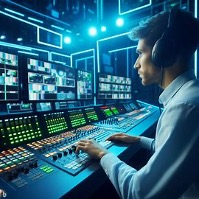
Figure 4 Switcher by Bing Image Creator
The Control Room’s Nucleus: An In-depth Exploration of the Video Switcher and Associated Roles
The Control Room, or the Production Control Room (PCR), is the command center for television production, where myriad technical decisions are made to achieve the desired quality and aesthetic of the final output. The Control Room orchestrates various elements ranging from cameras and audio to lighting and graphics. The apex of this orchestration, the hub that ties all these diverse elements together, is indisputably the Video Switcher, also known globally as the Vision Mixer.
Wikipedia explains that a vision mixer is “an apparatus designed to select among multiple live video inputs” and sometimes to “composite these sources to produce visual effects.” Known under different appellations such as a video switcher, production switcher, or video production switcher in the United States, this piece of equipment stands at the core of the PCR. Additionally, the operator of the machine is often referred to as the Technical Director (TD). The Vision Mixer operates in different settings, which could range from a PCR in a television studio to a mobile production vehicle, or even a post-production workspace. The equipment’s functionality is multi-faceted, extending beyond hard cuts to include an array of transitions like dissolves and pattern wipes. Notably, many vision mixers also possess keying operations, often termed mattes, and can even generate color signals (Wikipedia, n.d.).
Key Components of the Video Switcher:
1. Bus: This is a signal pathway that consolidates several video inputs into a single output. Each bus is represented by a line of buttons on the control panel, and pressing one of these buttons activates the corresponding video signal on that particular bus. Modern mixers usually feature one fixed bus as the program bus and another primary bus as the preview or preset bus.
2. Transitions: These are the visual techniques used to move from one video clip or camera angle to another. This could range from hard cuts to dissolves and pattern wipes.
3. Keying Operations or Mattes: These are employed to layer different video streams together. This feature is often used for visual effects.
4. Color Signal Generators: These are utilized to adjust the color and hue of the video footage, to suit the aesthetic requirements of the production.
Roles and Responsibilities in the Control Room:
1. Technical Director (TD): The TD is in charge of operating the vision mixer and oversees the technical quality and the type of shots to be used in the final output.
2. Director: The Director orchestrates the entire operation, giving commands to the Technical Director, Camera Operators, and other technical staff to create the final product as envisioned.
3. Producer: The Producer works closely with the Director to ensure that the production aligns with the editorial and thematic goals of the program.
4. Graphics Operator: Responsible for creating and controlling on-screen graphics, which range from simple lower-thirds to complex, interactive elements.
5. Audio Engineer: This role involves managing and balancing multiple audio sources, such as microphones, sound effects, and music tracks.
6. Script Supervisor: Ensures that the Director and TD are following the script and aware of any updates or changes that affect the show’s run-down.
7. Camera Control Unit (CCU) Operator: Adjusts the camera settings remotely from the Control Room, often under the direction of the Director or the Director of Photography.
8. Replay Operator: Manages instant replays, often in sports broadcasting, ensuring that the best angles and moments are captured and replayed.
This extensive overview provides a granular insight into the operational intricacies of a television studio’s Control Room, with a particular emphasis on the indispensable role of the video switcher. Whether you are an academic, a professional, or an enthusiast, understanding these roles and their interplay within the context of a vision mixer helps to illuminate the complexities of television production at a high level.
Reference:
Wikipedia. (n.d.). Vision mixer. Retrieved from [Vision Mixer – Wikipedia](https://en.wikipedia.org/wiki/Vision_mixer)
In summary, the Control Room’s ecosystem, centering around the Vision Mixer, serves as the conduit through which a mere concept metamorphoses into a tangible, broadcast-ready product. The hardware and human roles within this space must work in symphonic harmony to actualize the vision, thereby making the Control Room the nucleus of any television production operation.
Audio Control for Multiple People

Figure 5 Audio Console for Television Studio by Bing Image Creator
The Auditory Harmony of the Control Room: An Exposition on the Audio Console and Associated Roles
The audial atmosphere of a television production is a sophisticated harmony of various sound components, skillfully orchestrated from the Control Room. One of the most indispensable pieces of equipment in this context is the Audio Console, also known as the Mixing Console. This technology serves as the hub for integrating multiple audio signals into a harmonious output that enhances the audience’s sensory experience.
According to Wikipedia, a mixing console is an electronic apparatus designed for the “amalgamation of audio signals.” It finds utility in numerous settings such as “sound recording and reproduction, sound reinforcement systems, nightclubs, broadcasting, and post-production settings.” This device can accommodate a myriad of inputs, ranging from microphones and electronic instruments to prerecorded audio. Mixing consoles can work with either analog or digital signal formats and their processed signals are summed to produce a unified output suitable for broadcasting or amplification (Wikipedia, n.d.).
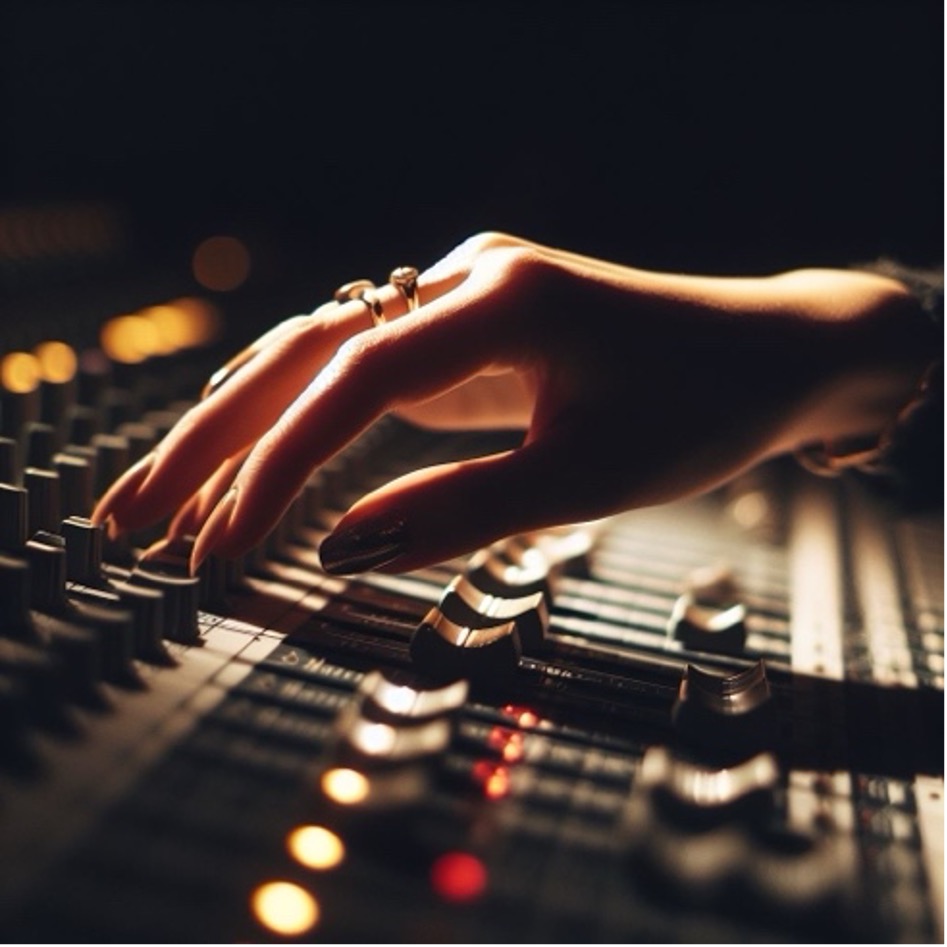
Figure 6 Close Up of hand on Console Fader by Bing Image Creator
Key Components of the Audio Console:
1. Channels: These are the individual pathways for each audio input. Professional consoles can have up to 96 channels to accommodate complex audio configurations.
2. Phantom Power: This feature is crucial for the operation of condenser microphones, which require an external power source.
3. Pan Control: It alters the perceived spatial location of a sound within a stereo field, offering an immersive auditory experience.
4. Filtering and Equalization: These functionalities allow for the selective amplification or attenuation of specific frequency bands, thereby fine-tuning the audio output.
5. Dynamic Range Compression: It allows for an increase in the system or channel’s overall gain, while staying within the equipment’s dynamic constraints.
6. Routing Facilities: These are essential for channeling the mixed audio signal to other equipment like recording systems or additional control rooms.
7. Monitoring Facilities: These enable the audio engineer to direct audio from various sources to loudspeakers or headphones for real-time evaluation, typically without affecting the main output.
8. Electronic Effects: Some consoles come with built-in effects like reverb to enhance the audio environment.
Roles and Responsibilities in Control Room Audio Management:
1. Audio Engineer: This role is pivotal in operating the audio console. The Audio Engineer is responsible for the real-time balancing and monitoring of sound levels from multiple sources. Their skill set must be versatile, capable of adjusting levels for on-set talent, remote contributors, and sound effects to create a cohesive auditory experience.
2. Director: Coordinates with the Audio Engineer to ensure that the audio component aligns seamlessly with the visual narrative being crafted.
3. Producer: Assists in shaping the auditory aspect of the production to fit the overall thematic and editorial objectives of the program.
4. Sound Designer: May work in tandem with the Audio Engineer to add sound effects and other audio elements that elevate the narrative impact.
5. Communications Coordinator: Manages talkback systems, facilitating clear and effective communication between the Control Room and the Studio Floor.
By understanding the complex architecture and functionalities of the audio console, as well as the roles that interact with it, one gains an appreciation for the intricacy involved in achieving auditory excellence in television production.
Reference:
Wikipedia. (n.d.). Mixing console. Retrieved from [Mixing Console – Wikipedia](https://en.wikipedia.org/wiki/Mixing_console)
In summation, the Audio Console and the personnel engaged with it serve as the auditory linchpin of the Control Room. Their combined expertise and the advanced features of modern mixing consoles contribute to the creation of a captivating and high-quality audiovisual experience for the audience. Thus, just as the Video Switcher is central to visual storytelling, the Audio Console is indispensable for auditory coherence and impact.
Graphics and Teleprompter

Figure 7 Teleprompter for Television Studio by Bing Image Creator
In the contemporary television landscape, graphics and the teleprompter play pivotal roles. Graphics provide a visual context, adding layers of meaning and interpretation to the spoken word. The teleprompter, meanwhile, is a tool for talent, aiding them in delivering their lines with fluency.
The Teleprompter in Television Production: Key Components, Roles, and Historical Evolution
In the realm of television production, the teleprompter is an instrumental piece of technology that performs a pivotal role in ensuring a seamless flow of scripted content. Serving as a sophisticated modern-day cue card system, the teleprompter aids on-screen talent in delivering their lines with eloquence and fluency. It accomplishes this feat by employing an optical arrangement that allows the speaker to maintain eye contact with the camera while reading text, thereby providing the audience with an impression of spontaneity or memorization.
According to Wikipedia, a teleprompter, also known as an “autocue” in certain regions, is a display apparatus that provides a “visual text interface” to guide the person delivering a speech or script. It achieves this by utilizing a clear glass or beam-splitter to reflect text from a screen strategically positioned near the camera lens directly into the eyes of the speaker. This optical alignment is conceptually akin to the “Pepper’s ghost” illusion, a technique used in traditional theater to create the appearance of an object or person that is not physically present (Wikipedia, n.d.).
Key Components of the Teleprompter:
1. Display Screen: This is where the text is initially displayed. It can be an LCD, LED, or even a tablet in smaller setups.
2. Beam-Splitter Glass: This glass reflects the text displayed on the screen to the speaker while being transparent enough to allow the camera to shoot through it.
3. Mounting System: Used to attach the teleprompter to the camera or a separate stand.
4. Control System: Usually a separate computer or tablet that controls the speed and direction of the scrolling text.
5. Remote Control: Allows the speaker or an operator to control the speed and flow of the text manually.
Roles and Responsibilities:
1. Teleprompter Operator: This person is responsible for setting up the teleprompter system and ensuring that it functions correctly throughout the production.
2. Scriptwriter: Provides the content to be displayed on the teleprompter, often coordinating with the teleprompter operator to ensure proper formatting.
3. On-Screen Talent: The individuals who read from the teleprompter. They often practice beforehand to ensure natural delivery.
4. Director: Coordinates with all the roles mentioned above to make sure that the use of the teleprompter fits within the broader production goals.
5. Producer: Oversees the integration of the teleprompter into the production, making logistical and budgetary decisions related to its use.
Historical Evolution:
Wikipedia outlines key milestones in the technological advancement of teleprompting, from the introduction of mechanical paper roll systems in 1952, to dual glass teleprompters in 1964, and computer-based systems in 1982. Over time, these technological developments have enhanced the utility and convenience of teleprompters, making them integral in various settings ranging from newsrooms to political conferences (Wikipedia, n.d.).
Thus, the teleprompter is not merely a technological aid for talent; it is a crucial component that influences the presentation and engagement level of a television program. By understanding the mechanics and functionalities of this device, one gains a more nuanced appreciation for the complex choreography involved in creating a compelling television experience.
Reference:
Wikipedia. (n.d.). Teleprompter. Retrieved from [Teleprompter – Wikipedia](https://en.wikipedia.org/wiki/Teleprompter)
In summation, the teleprompter serves as a linchpin in the intricately coordinated system that constitutes a television production. Through its strategic interplay with on-screen talent, scriptwriters, and other production staff, the teleprompter enriches the delivery of scripted content, elevating the overall quality of the program. Therefore, understanding the roles, responsibilities, and key components of the teleprompter is instrumental in mastering the nuanced art of television production.
Graphics
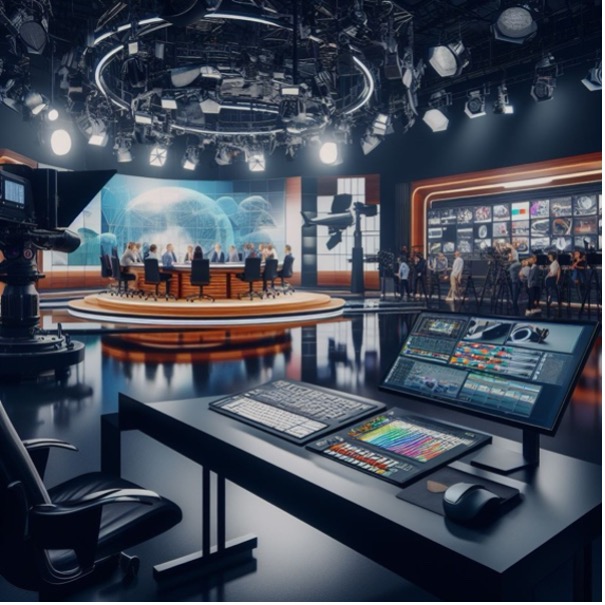
Figure 8 Computer Graphics for Television Studio by Bing Image Creator
Television Studio Production Graphics: Character Generators, Key Components, and Functionalities
The role of graphics in television production is imperative for visual storytelling, audience engagement, and conveying contextual information in real-time. One pivotal piece of technology that makes this possible is the Character Generator (CG), a hardware or software system crucial for crafting textual and graphical overlays during live broadcasts. It’s a technology that can be likened to a ‘visual composer,’ rendering high-quality, animated elements on-the-fly, thus enabling real-time adaptability in live settings such as news programs and sports broadcasts.
According to Wikipedia, a Character Generator is a device or application that serves as a tool for the creation of textual elements, both static and animated, for the purpose of insertion into a video feed. It encodes high-quality video signals like digital Serial Digital Interface (SDI), analog component video, high-definition, or even RGB video. The advent of computer-based character generators has not only blurred the boundaries between hardware and software solutions but has also provided a highly adaptable and responsive technology capable of meeting the evolving demands of live television (Wikipedia, n.d.).
Key Components of Character Generators:
1. User Interface: Typically similar to desktop publishing software, allowing for easy manipulation of text and graphic elements.
2. Encoding Unit: Translates digital content into high-quality video signals compatible with live streams.
3. Graphic and Text Library: A collection of pre-designed templates and graphical elements for quick insertion.
4. Key Signal Producer: Generates an alpha channel that can be used by the vision mixer to determine translucency levels in the graphic overlays.
5. Control Systems: Can be operated manually or can be programmed to automatically integrate with other elements of a live broadcast, like real-time data feeds.
Roles and Responsibilities:
1. Graphics Operator: Responsible for creating, modifying, and deploying text and graphic elements during live broadcasts.
2. Broadcast Engineer: Ensures that the Character Generator is technically sound and properly integrated into the live broadcast system.
3. Producer: Coordinates with the Graphics Operator to make sure that the graphics complement the narrative and visual elements of the broadcast.
4. Director: Makes real-time decisions about which graphics to display, when to display them, and how they fit into the overall storytelling strategy.
5. Data Analyst: For sports or financial broadcasts, this role is responsible for feeding real-time data that can be displayed as graphics.
In North America, digital on-screen graphics are often referred to as “chyrons,” a term which has become genericized but originally referred to products from the Chyron Corporation. Similarly, in the United Kingdom, these graphics are often called “Astons,” another example of a genericized term initially stemming from Aston Broadcast Systems (Wikipedia, n.d.).
The flexibility of modern Character Generators is manifestly evident in their ability to respond to real-time events. For example, during a live sports event, a previously lesser-known athlete gaining prominence can be swiftly acknowledged through newly-generated graphical content, thereby enriching the viewer’s experience and understanding.
In summary, the Character Generator stands as an indispensable asset in contemporary television production, offering dynamic solutions that accommodate the ever-changing landscape of live broadcasting. It’s more than a tool; it’s a facilitator of visual storytelling, delivering a complex layer of informational richness that both complements and enhances the live television experience.
Reference:
Wikipedia. (n.d.). Character Generator. Retrieved from [Character Generator – Wikipedia](https://en.wikipedia.org/wiki/Character_generator)
By understanding the key components, roles, and dynamic functionalities of the Character Generator, we can gain valuable insights into the intricate tapestry of real-time visual storytelling that constitutes modern television production.
Lighting Board and Digital Playback (and Record) Unit
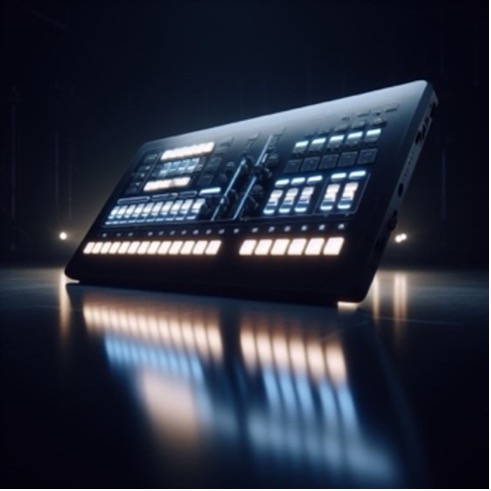
Figure 10 Lighting Board by Bing Image Creator
The lighting board controls the various light sources and their intensities, contributing to the mood and aesthetics of the broadcast.
Lighting Control
A Lighting Control Console, variably referred to as a lightboard, lighting board, or lighting desk, constitutes an electronic device engineered for the regulation of multiple stage lights in tandem. The console is an integral component of theatrical lighting design and is ubiquitously employed across the entertainment industry. Typically situated at the Front of House (FOH) or ensconced within a dedicated control booth, the console serves as the operational epicenter for lighting control during performances.
The fundamental functionality of all lighting control consoles encompasses the manipulation of dimmers, which in turn modulate the intensity of the stage lights. Contemporary iterations of these consoles possess advanced capabilities that extend to the regulation of Intelligent Lighting—lights characterized by their capacity for movement, color variation, and gobo pattern changes. Additionally, modern consoles can exercise control over fog machines, hazers, and an array of specialized effects apparatus. Some even offer interfaces that enable interaction with other performance-related electronic hardware, such as sound boards, projectors, and media servers, thereby facilitating a harmonized control environment.
In terms of communication protocols, DMX512 is the most prevalent in today’s entertainment industry. However, there are alternative protocols that are still in use (e.g., 0-10 V analog lighting control), as well as emerging protocols like ACN and DMX-512-A, which are designed to accommodate the ever-expanding sophistication of lighting and effects devices. Several consoles also possess networking capabilities, often utilizing protocols like ESTA E1.31 sACN or Art-Net to communicate over a Local IP network.
Lighting control consoles can range considerably in their scale and intricacy, from rudimentary preset boards to highly specialized consoles designed for controlling moving lights. Nonetheless, the principal aim of these devices remains invariant: to streamline and centralize the control of lighting elements, thereby allowing the lighting designer to focus on crafting an efficacious and visually engaging performance. A significant number of these consoles are compatible with MIDI Show Control signals and commands, thus enabling their integration into broader show control systems for more elaborate productions.
The technological landscape has also seen the advent of mobile applications that convert devices like Android phones and iPhones into remote controllers for lighting consoles. These software applications, some of which are developed by independent programmers, can transmit Art-Net packets, allowing mobile devices to function as fully capable lighting consoles when used in conjunction with appropriate hardware. An example of this would be ETC’s (Electronic Theater Controls) iRFR application for Apple devices or its aRFR counterpart for Android.
Furthermore, the Controller Interface Transport Protocol (CITP) serves as a network protocol that facilitates the exchange of non-show critical information between lighting control consoles, visualizers, and media servers during the pre-production phase. This protocol is particularly useful for tasks like SDMX, media and thumbnail browsing, and media streaming among various devices.
In summary, the lighting control console is an indispensable instrument in the realm of theatrical and entertainment lighting, acting as a nexus for control, coordination, and creative expression.
Reference:
Wikipedia. (n.d.). Lighting Control Console. Retrieved from https://en.wikipedia.org/wiki/Lighting_control_console
Digital Recorder/Players in Television Studio Production: A Comprehensive Overview
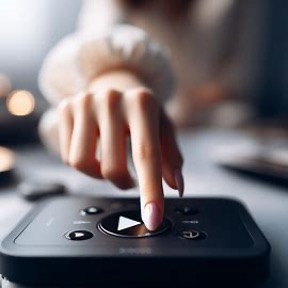
Figure 11 Close Up of hand pressing play by Bing Image Creator
Digital Recorder/Players are an indispensable part of modern television studio production, serving multiple functions such as recording live footage, playback of pre-recorded segments, and aiding in a myriad of post-production activities. These devices have evolved significantly over time, both in terms of technological sophistication and functional versatility. They are tailored to seamlessly integrate with other digital media equipment in a studio, providing a cohesive media management solution.
According to Wikipedia, a Digital Video Recorder (DVR) is a device that records video in a digital format to disk drives or other digital storage mediums. This description serves as an appropriate point of departure to understand digital recorder/players, which can be thought of as a technologically advanced and versatile form of DVR, equipped to manage various file types and resolutions (Wikipedia, n.d.).
Key Components:
1. Front-Panel Controls: Designed to mimic the interface of traditional video tape recorders (VTRs) to ease the transition for users accustomed to older technology.
2. LCD Display: Facilitates real-time monitoring and interaction with the system.
3. Software Suite: Equipped with software for clip management, basic editing, and playlist creation.
4. Connectivity Options: Supports various file types and connection formats like USB 3.0 and Gigabit Ethernet.
5. Storage Medium: A high-capacity digital storage medium that enables extended recording and archiving capabilities.
Roles and Responsibilities:
1. Media Manager: Responsible for overseeing the storage and retrieval of media files on the digital recorder/player system.
2. Technical Director: Ensures compatibility and seamless integration between the digital recorder/players and other systems like video production switchers and audio mixers.
3. Operator: Handles real-time tasks, such as starting/stopping recording, playing back prerecorded segments, and executing any on-the-fly edits.
4. Post-Production Editor: Utilizes recorded footage for editing tasks, which may include clip selection, sequencing, and the application of special effects.
5. Broadcast Engineer: Responsible for maintaining the hardware and software, ensuring that all components are functioning optimally.
The functionality of digital recorder/players extends far beyond mere storage and playback. For example, in 4K mode, a single channel can either be used for recording or outputting 4K content. In HD/SD modes, one channel can record, while two other channels can output content simultaneously. Such multi-functionality makes these systems indispensable in modern studio environments where flexibility and adaptability are paramount (Edius, n.d.).
Moreover, the system’s integration capabilities are noteworthy. They can be paired with video production switchers, audio mixers, and other equipment, facilitating a robust, interactive presentation environment. This kind of integration is crucial for complex visual tasks such as edge-blending or 3D rendering, and for real-time management of live broadcasts.
While digital recorder/players primarily operate with high-definition digital formats, it’s worth mentioning that older DVD-based DVRs may not be fully compatible with HDTV due to historical differences in standardization timelines. Despite this, these older systems can still function with modern HDTV setups, albeit at a compromised visual quality.
In summary, digital recorder/players serve as the linchpin in the contemporary television production ecosystem, offering a multifaceted platform for media management, live broadcast operations, and post-production tasks. Their technological adaptability and functional richness make them an invaluable asset in achieving professional-level broadcast quality.
References:
– Edius. (n.d.). Digital Recorder/Players. Retrieved from [Edius Website]
– Wikipedia. (n.d.). Digital Video Recorder. Retrieved from [Digital Video Recorder – Wikipedia](https://en.wikipedia.org/wiki/Digital_video_recorder)
For student learners seeking a simplified understanding, envision digital recorder/players as highly advanced DVD players, proficient in both playing and recording videos at unparalleled quality. Their multi-connectivity and compatibility with various file types render them essential tools for managing complex presentations or live shows.
Section 3: On the Studio Floor
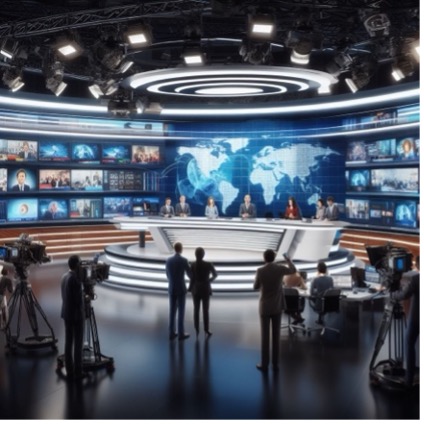
Figure 2 Television Studio Floor by Bing Image Creator
The Television Studio Floor and the Three-Camera Setup: A Multifaceted Approach to Visual Storytelling
The television studio floor is a complex environment where multiple elements, including cameras, operators, and teleprompters, interact seamlessly to produce professional broadcasts. Notably, a typical studio often incorporates a three-camera setup, which is orchestrated to capture a diverse range of angles and perspectives. This enhances the narrative depth and visual richness of the broadcast, contributing to a more engaging and immersive viewer experience.
Key Components:
1. Cameras: Three high-definition or ultra-high-definition cameras, each with its lens and sensor specifications, are deployed for varied capture capabilities.
2. Control Systems: Each camera is fitted with a control system that allows remote manipulation of its functions, such as focus, zoom, and panning.
3. Teleprompters: These are integrated with cameras to assist talent in delivering lines while maintaining eye contact with the audience through the camera lens.
4. Mounting Gear: Tripods or dollies are generally used to mount the cameras for static or dynamic positioning.
Roles and Responsibilities:
1. Camera Operators: They are tasked with controlling the cameras, whether manually or through remote systems. Their duties also include collaborating with directors to establish shots and framing.
2. Teleprompter Operators: They work in tandem with camera operators and talent to ensure that the script scrolls at an appropriate speed, allowing the presenter to read the text naturally.
3. Floor Manager: Coordinates the activities on the studio floor, including signaling talent and ensuring that camera operators are in position.
4. Director: Oversees the overall vision of the broadcast, instructing camera operators on which shots to take and when to cut between them.
5. Talent: The on-air personalities who read from the teleprompters and engage with the audience.
6. Technical Team: Responsible for setup, calibration, and maintenance of the camera systems and teleprompters.
The three-camera setup is particularly useful in capturing a subject from multiple angles, offering an array of shots that can range from wide-angle views to close-ups. This multi-camera strategy enables swift transitions between different perspectives during live broadcasts or post-production editing, thereby enriching the storytelling process. Each camera can be adjusted individually for specific requirements, such as focus and exposure, thanks to the built-in control systems. This allows for a high degree of customization, enabling operators to adapt to changing lighting conditions or script requirements.
The teleprompters serve a critical function in this ecosystem. According to Wikipedia, a teleprompter is a display device that prompts the person speaking with an electronic visual text of a speech or script (Wikipedia, n.d.). These devices are strategically positioned in relation to the camera lens, allowing talent to read their lines while appearing to maintain eye contact with the audience. This is achieved through a clear glass or beam-splitter that reflects the text to the talent, which they can read while looking directly into the camera lens. This fosters a sense of connection and engagement between the presenter and the audience, an integral aspect of effective broadcasting.
To summarize, the television studio floor represents a symbiotic union of technology and human roles, orchestrated to realize the collective aim of effective visual storytelling. The three-camera setup, augmented by integrated teleprompters and specialized roles, provides a comprehensive toolset for modern broadcasting. It accommodates a multiplicity of shots and angles, all orchestrated to serve the narrative flow and enhance viewer engagement.
References:
– Wikipedia. (n.d.). Teleprompter. Retrieved from [Teleprompter – Wikipedia](https://en.wikipedia.org/wiki/Teleprompter)
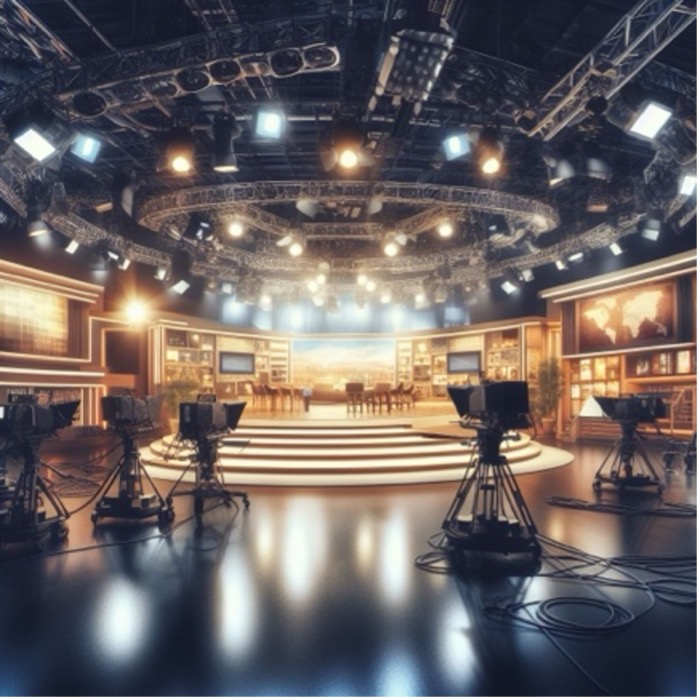
Figure 12 Television Production Studio by Bing Image Creator
The Evolution and Functionality of Television Studio Lighting Grids: From Traditional Instruments to LEDs
The illumination infrastructure within a television studio is a sophisticated array of lighting instruments, each designed to fulfill specific roles that contribute to the overall visual quality of the production. The lighting grid, usually suspended above the studio floor, has historically been equipped with traditional lighting instruments like Fresnels and spotlights. These have been mainstays in television production, providing essential lighting configurations such as key lighting, fill lighting, and backlights. However, there has been a gradual transition towards LED technology, which has redefined both the technical aspects and creative possibilities of studio lighting.
Key Components:
1. Lighting Grid: A metal framework suspended from the ceiling, onto which lighting instruments are mounted.
2. Traditional Lighting Instruments: These include Fresnels, spotlights, ellipsoidals, and PAR cans, each serving specialized roles.
3. LED Lights: These newer fixtures offer energy efficiency and a broader color spectrum.
4. Control Systems: Dimmer boards or lighting control software regulate the intensity and color of the lights.
5. Teleprompters: These are positioned in such a way as to be illuminated adequately but not glaringly, to assist the talent in reading the script effectively.
Roles and Responsibilities:
1. Lighting Director: Responsible for conceptualizing and implementing the lighting design that complements the director’s vision.
2. Lighting Operators: Manage the control systems to adjust lighting during the production.
3. Gaffers: Assist in the physical setup and adjustment of lighting instruments on the grid.
4. Teleprompter Operators: Ensure the script is scrolled at an appropriate speed and is well-illuminated.
5. Technical Team: Performs maintenance checks and calibrations on the lighting instruments and teleprompters.
Traditional lighting fixtures like Fresnels and spotlights have been indispensable for specific lighting needs. Fresnels are particularly known for their capability to project a soft, yet directional light, making them ideal for key lighting. Spotlights are often used for creating strong shafts of light, often employed for backlighting to separate subjects from the background. According to Wikipedia, Fresnels and spotlights have been prevalent in television studios, offering precise control over the beam and quality of light (Wikipedia, n.d.).
However, the advent of LED technology has marked a transformative shift in studio lighting. LEDs are not only energy-efficient but also provide a broader range of color temperatures. This allows for greater creative freedom, as lights can be adjusted dynamically during live broadcasts or in post-production. In essence, LEDs have facilitated the evolution from mere illumination to visual storytelling.
Moreover, control systems have also advanced in parallel with lighting technology. Dimmer boards and specialized software now provide operators with the ability to control individual lights or groups of lights, modulating aspects such as intensity, focus, and color in real-time. This has particularly impacted how teleprompters are illuminated. Operators can now ensure that the prompter screen is visible to the talent without either overexposing the shot or casting unwanted shadows, thereby enhancing the overall quality of the production.
In conclusion, the lighting grid in a television studio is a critical aspect of production that has undergone significant evolutionary changes. Traditional lighting instruments, with their specialized functionalities, have been augmented by the advent of versatile and efficient LED technology. The roles and responsibilities surrounding these components are as intricate as the technology itself, collaboratively striving to achieve the highest quality of visual storytelling in television production.
References:
- Wikipedia. (n.d.). Stage lighting instrument. Retrieved from [Stage lighting instrument - Wikipedia](https://en.wikipedia.org/wiki/Stage_lighting_instrument)
Basic Set—Newscast Table and Chairs
The Anatomy of Television Studio Sets: Customization and Functional Design in Broadcast Newscasts and Interview Shows The physical space within a television studio is an intricate tableau designed to serve both functional and aesthetic purposes. It is an environment engineered to facilitate the effective dissemination of information while also establishing a distinct visual identity for the broadcast. Typically, a television studio is outfitted with rudimentary elements like a newscast table and chairs for news programs, or a duo of chairs for interview-based shows. These foundational pieces are highly customizable to align with the specific thematic and visual requirements of the show in question.
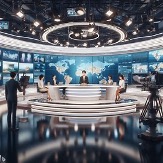
Figure 13 Interview Set by Bing Image Creator
Key Components:
1. Newscast Table: This is a specialized table designed to accommodate news anchors and their various technological requirements such as microphones, laptops, and prompter controls.
2. Chairs: Whether for newscasts or interviews, chairs are chosen based on comfort and visual harmony with the set.
3. Backdrop: This may include visual elements like cityscapes, the show’s logo, or thematic graphics.
4. Props and Décor: These may include additional furniture, like side tables, or props that relate to the subject matter or theme of the show.
5. Lighting: Customized to accentuate the set design and ensure subjects are well-lit.
6. Camera Angles: Sets are designed with camera angles in mind to ensure that all visual elements can be captured effectively.
Roles and Responsibilities:
1. Set Designer: Responsible for conceptualizing and drafting the set’s layout and visual elements.
2. Set Builders: Tasked with the physical construction and assembly of the set based on the designer’s plans.
3. Art Directors: Oversee the aesthetic aspects, ensuring visual consistency throughout the set.
4. Director: Coordinates with the set designer and technical team to ensure the set facilitates smooth production.
5. Camera Operators: Must understand the set design to capture it effectively during the broadcast.
According to Wikipedia, television studio sets often employ a “zoning” approach, where distinct areas are designated for different functions, such as news presentation, interviews, and special segments. This functional differentiation enables smoother transitions between various segments of a broadcast program (Wikipedia, n.d.).
The set serves not just as a physical location but also as a visual extension of the show’s brand. It plays a crucial role in setting the tone and creating the atmosphere that engages the viewers. The backdrop, whether it displays a skyline for a news program or a more abstract or thematic background for talk shows, contributes to this sense of atmosphere. This aligns with the critical role that set designers play, as they are responsible for melding functional requirements with aesthetic considerations to create a space that complements the narrative being delivered.
Set builders bring the designer’s vision to life, ensuring that every component from the newscast table to the backdrop and props align with the prescribed specifications. Art directors typically collaborate closely with set designers to ensure that the color scheme, textures, and other visual elements are cohesive and in line with the show’s branding.
In summary, the television studio set is an amalgamation of form and function, constructed to meet both the aesthetic and practical demands of broadcast newscasts and interview shows. From set designers to builders, every role is instrumental in translating a conceptual vision into a tangible and functional space. These sets, far from being mere backdrops, act as critical visual interfaces that interact with viewers, providing both content and context in the complex world of television broadcasting.
References:
– Wikipedia. (n.d.). Television studio. Retrieved from [Television studio – Wikipedia](https://en.wikipedia.org/wiki/Television_studio)
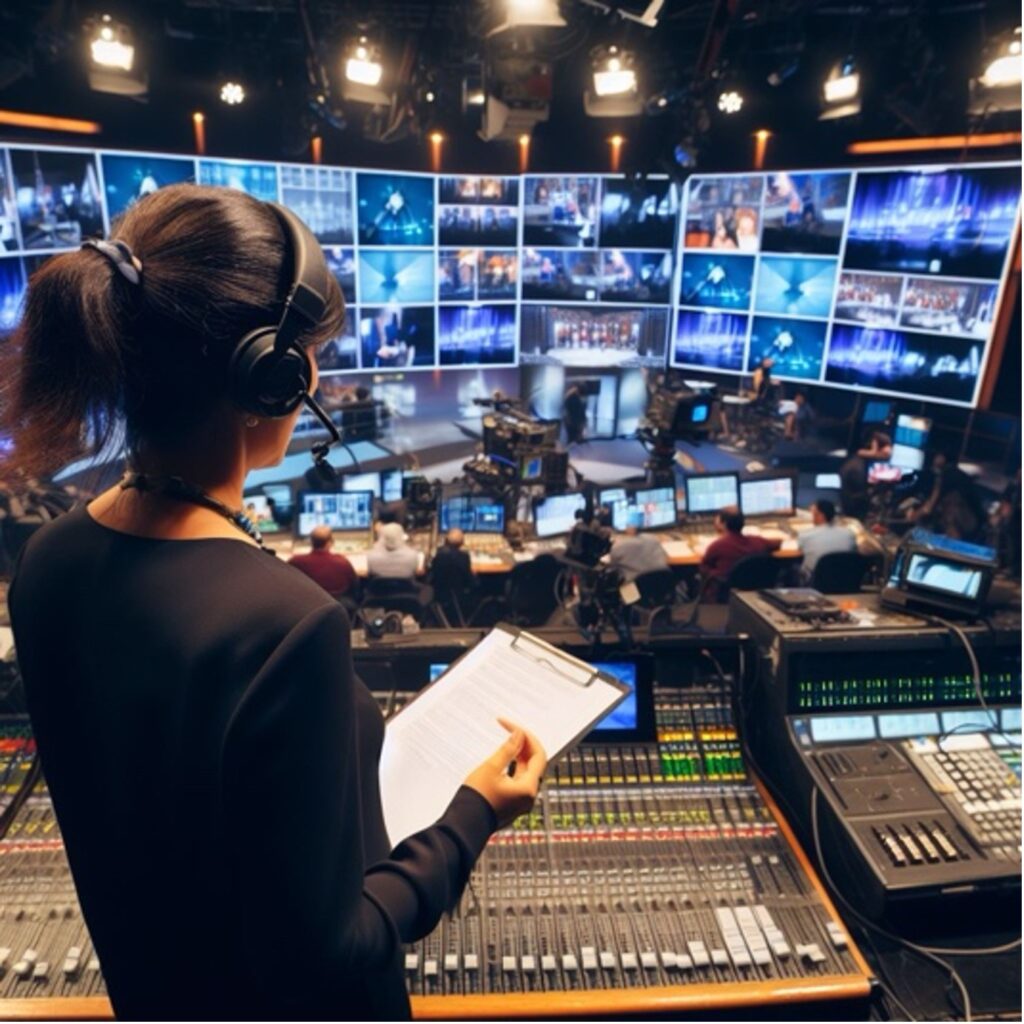
Figure 15 Floor Manager: a view from the Control Room by Bing Image Creator
Conclusion
The television studio environment represents a fascinating nexus of technology and human expertise. As we’ve explored in this chapter, understanding the roles and functionalities of both the Control Room and Studio Floor is pivotal for anyone aspiring to master the complex craft of television production. While this chapter has offered an introductory overview of the basic configurations commonly encountered in professional television studios, rest assured that subsequent chapters will delve into these aspects in greater detail. To students keen on delving into this intricate world, be encouraged: mastery is a journey that begins with foundational knowledge, and every step you take deepens your understanding and refines your skills.
Review Questions with answers at the very end of this chapter:
1. What are the basic components commonly found on a television studio set?
– Hint: Think about the furniture and physical spaces designed for anchors or hosts.
2. What role does a set designer play in television production?
– Hint: Consider the responsibilities in both conceptual and aesthetic aspects.
3. What are some typical functionalities of a Digital Playback (and Record) Unit?
– Hint: Reflect on its capabilities in storing live footage and playing back pre-recorded segments.
4. How do character generators contribute to live television production?
– Hint: Consider the types of graphics they can create and how they are utilized during live events.
5. What types of lighting instruments are commonly found in a television studio lighting grid?
– Hint: Think about traditional lighting tools used for different lighting functions.
Your journey in understanding the multifaceted world of television production has just begun, and there is much more to learn and explore. May you find the upcoming chapters both enlightening and instrumental in your educational journey.
Suggested Further Readings
1. “The Bare Bones Camera Course for Film and Video” by Tom Schroeppel
– This book provides a concise yet comprehensive overview of camera fundamentals.
2. “Television Production Handbook” by Herbert Zettl
– A seminal text in the field, Zettl’s book delves deeply into the technical and artistic aspects of television production.
3. “Directing and Producing for Television: A Format Approach” by Ivan Cury
– A good guide for those interested in the various formats of TV production, from live broadcasts to pre-recorded serials.
4. “Set Lighting Technician’s Handbook” by Harry Box
– This book is ideal for those interested in the role lighting plays in the television studio environment.
5. “Introduction to Media Production: The Path to Digital Media Production” by Gorham Kindem, Robert B. Musburger PhD
– This book is another excellent resource for understanding the foundational elements of media and television production.
6. “Audio in Media” by Stanley R. Alten
– Although primarily focused on audio, this book discusses its integration into a television studio environment.
Recommended Website Links
1. Creative Cow Forums
– [Creative Cow](https://www.creativecow.net/)
– A community for professionals in the film and broadcast industry, including discussions on studio setup, lighting, and more.
2. TV Technology Magazine
– [TV Technology](https://www.tvtechnology.com/)
– This site offers news and features on the latest technological advances in the television industry.
3. The Society of Broadcast Engineers
– [SBE](https://www.sbe.org/)
– The website offers webinars, courses, and certification opportunities for broadcast engineers.
4. Behind the Mixer
– [Behind the Mixer](https://www.behindthemixer.com/)
– This website is particularly useful for those interested in the audio aspects of television production.
5. No Film School
– [No Film School](https://nofilmschool.com/)
– While more film-focused, the site also covers topics relevant to television studio environments, such as lighting and camera work.
Glossary: The Television Studio Environment
ADR (Automated Dialogue Replacement)
The process of re-recording dialogue in post-production to improve audio quality or change lines.
Boom Microphone
A microphone mounted on a boom arm, allowing for flexible placement above or below subjects.
Camera Control Unit (CCU)
A device used to control various attributes of a television camera, such as color balance and exposure.
Camera Operator
A professional responsible for operating the camera, framing shots, and often selecting the appropriate lenses.
Control Room
The space in a television studio where the director, producers, and other technical staff control the various aspects of a production.
Floor Director
A member of the crew responsible for managing activities on the studio floor, including cueing talent and relaying messages from the control room.
Genlock
A technique to synchronize multiple video sources to a common time reference to ensure coherent output.
Green Screen
A green backdrop used for chroma key compositing, where it can be replaced with different backgrounds in post-production.
IFB (Interruptible Feedback)
A communication system that allows the control room to speak directly into the on-air talent’s earpiece.
Key Light
The main source of light in a lighting setup, often positioned at a 45-degree angle to the subject.
Lower Thirds
A graphical overlay placed in the lower part of the screen, commonly used to display names, titles, or additional information.
Multicore Cable
A thick cable containing multiple smaller cables, used to carry different types of signals.
Pedestal
A stand upon which a television camera is mounted, allowing for versatile movement including panning, tilting, and elevation.
Talkback System
An intercom system enabling communication between the control room and the studio floor or recording area.
Tally Light
A small light on a camera that indicates whether the camera is live and its feed is being used in the program at the moment.
Technical Director
The crew member responsible for switching between different camera feeds, managing special effects, and overall visual composition during a production.
Teleprompter
A device that projects text for on-air talent to read, usually positioned near the camera to facilitate eye contact with the audience.
Three-Point Lighting
A standard lighting setup using three light sources: key light, fill light, and back light, designed to evenly illuminate the subject.
Triax Cable
A type of cable used to connect television cameras to CCUs and other equipment, capable of carrying video, audio, and control signals.
White Balance
The adjustment of different color intensities to render white correctly, irrespective of the ambient lighting conditions.
—
This glossary is designed to provide students with a foundational understanding of key terms and concepts they will encounter in the realm of television production.
Review Questions with answers:
1. What are the basic components commonly found on a television studio set?
– Hint: Think about the furniture and physical spaces designed for anchors or hosts.
– Answer: Newscast table, chairs, backdrop, props and décor, and specialized lighting.
2. What role does a set designer play in television production?
– Hint: Consider the responsibilities in both conceptual and aesthetic aspects.
– Answer: A set designer is responsible for conceptualizing and drafting the set’s layout and visual elements, aligning functional requirements with aesthetic considerations.
3. What are some typical functionalities of a Digital Playback (and Record) Unit?
– Hint: Reflect on its capabilities in storing live footage and playing back pre-recorded segments.
– Answer: Storing live footage, playing back pre-recorded segments, assisting in post-production activities, and managing both live and recorded media content.
4. How do character generators contribute to live television production?
– Hint: Consider the types of graphics they can create and how they are utilized during live events.
– Answer: Character generators create static or animated textual elements and graphics for insertion into a video stream, often used for real-time adjustments in live broadcasts like sports and news.
5. What types of lighting instruments are commonly found in a television studio lighting grid?
– Hint: Think about traditional lighting tools used for different lighting functions.
– Answer: Fresnels, spotlights, and other fixtures serving various functions from key lighting to fill and backlights.

